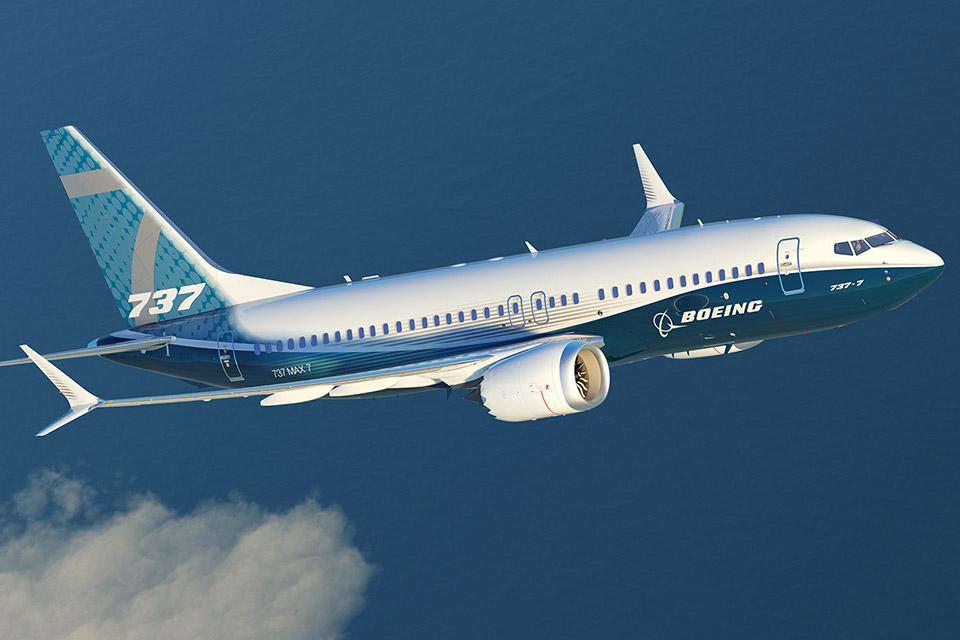The Boeing 737 Max has been in the news in recent years due to its operational issues. Following a settlement between shareholders and Boeing’s board of directors, this plane is once again in the spotlight.
Geo-Economics Of Energy: Why Russia Needs Long-Time Friend India’s Help For Its LNG-Offensive
According to Wall Street Journal, Boeing’s current and previous directors have secured a $225 million settlement in a shareholder lawsuit alleging that the company’s board of directors failed to adequately manage safety issues involving the 737 MAX.
Insurers will pay the compensation, not the board members and executives, the Journal said, citing people familiar with the agreement. The proposed settlement deal is scheduled to be filed in Delaware Chancery Court in the coming days, and it is subject to a judge’s approval.
According to the report, Boeing has also promised to appoint a mediator to tackle internal issues and select a board representative with aviation safety knowledge. However, this deal does not involve an admission of wrongdoing on the side of the directors, including Boeing Chief Executive Officer David Calhoun, the report said.

The case, which was filed in Delaware Chancery Court, claims that the board did not develop any methods to review and monitor aviation safety until after the 737 MAX fleet was grounded after two crashes in Ethiopia and Indonesia killed 346 people in 2018 and 2019.
A few months back, a Delaware judge rejected the company’s motion to dismiss the lawsuit, saying that the company’s board of directors must face a shareholder lawsuit over two disastrous 737 MAX crashes that killed 346 people. Boeing previously admitted to concealing information about a crucial flight control system at the heart of the two crashes.
Boeing 737 Max
The Boeing 737 MAX is an upgrade from Boeing’s 737 narrow-body commercial planes. It competes with the Airbus A320neo family.
The 737 MAX is based on previous 737 designs, but with more fuel-efficient CFM International LEAP-1B engines, aerodynamic alterations such as the 737’s signature split-tip winglets, and airframe upgrades.
The 737 MAX series comprises different variants, with 138 to 204 passengers in a typical two-class configuration and a range of 3,215 to 3,825 nautical miles (5,954 to 7,084 km).
The company’s board of directors had approved the 737 MAX development program in August 2011. The first 737 MAX 7 took to the skies in May 2013, while the first MAX 8 was delivered to Malindo Air in May 2017, and it began service on May 22, 2017.
However, the Maneuvering Characteristics Augmentation System (MCAS) of the 737 MAX had a recurrent failure, resulting in two tragic crashes involving a Lion Air Flight 610 and Ethiopian Airlines Flight 302, both of which killed 346 people.
From March 2019 to November 2020, Boeing 737 Max was grounded all over the world. Ethiopia and the United States conducted
What Went Wrong?
The Lion Air Flight 610 took off from Jakarta on October 29, 2018. It abruptly lost altitude, went into an uncontrollable dive, and fell into the Java Sea 13 minutes after takeoff.
Then, on March 10, 2019, Ethiopian Airlines Flight 302 from Nairobi experienced similar issues, crashing into the desert around six minutes after taking off.
The reasons for the two crashes were complicated, but they were linked mostly to the 737’s MCAS, which manages changes in behavior caused by the plane’s larger engines than its predecessors.
The Angle of Attack (AOA) Disagree alert is the feature in question, and it was created to notify pilots when two different sensors reported contradicting data. Although the 737 Max has two, MCAS only used one. If the AoA sensor fails, the MCAS may activate when it shouldn’t, causing the nose to drop unnecessarily.
Because of the design, there was no automatic switch to the other AoA sensor, and MCAS continued to use the incorrect sensor values. This is exactly what happened in both accidents and it was also difficult to override the system.
The Fixes
The Boeing 737 Max is once again in the air and the Federal Aviation Administration (FAA) has released a comprehensive description of its conclusion. The MCAS software has been updated to utilize both AoA sensors instead of just one.
When both AoA sensors warn of a likely stall, the MCAS now only activates once, rather than many times. An “AoA disagree warning” is given to pilots, indicating that MCAS may have been activated incorrectly.
At the time of the two tragedies, this warning was not standard equipment; airlines had to acquire it as an add-on. Importantly, pilots will now be instructed on how to use the MCAS and how to deal with any issues. Pilots reported that they were initially unaware of MCAS’ existence.
However, another issue with the 737 Max appears to have surfaced, with airlines pulling dozens of MAX jets from service early this year after Boeing issued a warning about a production-related electrical grounding problem in a backup power control unit located in the cockpit.
- Contact the author at ashishmichel@gmail.com
- Follow EurAsian Times on Google News